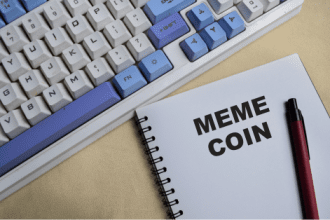Why Web3 culture lets creators and fans profit together on-chain!
As the Web3 culture grows up, we’re witnessing one of the most fascinating shifts now, not only in technology but in what culture means itself. Culture! Culture used to be that thing that the media, the big platforms, the gatekeepers decreed that it was. But now, with the rise of decentralised protocols, culture is increasingly a thing that communities build together. We are watchers but also players, co-owners, stakeholders in the tale. Look at the mania around memecoins. That’s because these tokens are not just speculative assets; they become cultural artifacts jokes, memes, symbols, badges of belonging.
Studies have demonstrated that memecoins play the role of both a financial instrument as well as a cultural artifact in Web3. arXiv When an NFT, or in the case of Dogecoin a simple coin itself, represents a great shared joke, collective belief preferably one that occurs at a certain moment of Internet history and nowhere else it creates culture you can hold in your wallet, visibly holding its value to others; bearing down on their imagination. And then there’s identity.
In Web3, our online identity is not simply a profile picture or a username on the site. The decentralized web (or “Web 3.0” as it is sometimes known) puts the power of data, identity, digital “land”everything the user’s hands. “my wallet address = my posterity on-chain” but not “my account = platform property.” That change alters how people behave. It means you grow your reputation, your network and your legacy in a way that’s enduring if a platform goes away. Where this goes socially is enormous. For creators, artists or musicians: the motivation shifts from “gain followers” to “build an ecosystem that outlives the post”.
Culture becomes durable. When one of your works is minted, traded, remixed, it goes places. You’re not just pursuing fleeting likes. What you’re doing is constructing culture that has value, this center of meaning and permanence. But we should also be alert to the downside. one danger is that Web3 culture turns inward. If early adopters are busy swanning around enjoying the nether-speak and exclusive drops, then we may simply be reproducing old internet communities’ exclusivity and gatekeeping all over again just in new garb.
Accessibility is the question: Can a person who doesn’t know about wallets, gas fees and smart contracts still join in? To many, the UX won’t be cultural until it’s seamless for all. The tension between speculation and culture is real also. With coin or NFT values tied to community membership, you risk of valuing your ownership of assets over the meaning and health of a community. In other words: does the culture work for the community, or does it work for the market? That is a question that Web3 will keep wrestling with. Despite these obstacles, the opportunity is massive. When a community can mint its own stories, own its own narratives, reward participation and shape the shared future culture ceases to be rented space, it becomes communal property.
We’re on the brink of a new sort of online culture: one where memes, music, art, forums and governance all that destroy the-platform from within kind of stuff is not just powered by the platforms we use; it’s owned by the people who live it. In other words: Web3 culture isn’t simply the next layer of the internet; it’s the next chapter in how we connect online. We’re going from a culture of being consumers to stewards. Op-ed contributors Opinion And in that transition is both opportunity and imperative.






















